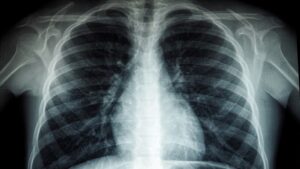[ad_1]
A panic attack is an anxiety disorder in which you are suddenly and regularly affected by a feeling of panic or fear.
Almost everyone can experience feelings of anxiety and panic at certain times. This feeling is a natural response to tense, stressful or dangerous situations.
But for a person suffering from panic attack disorder, feelings of anxiety, worry, panic, and stress occur both regularly and often for no apparent reason.
Panic Disorder is a mental disorder associated with panic attacks. Unexpectedly recurrent panic attacks are observed as anxiety caused by the expectation of these attacks to occur, and difficulty in adapting to the natural flow of life due to the anxiety of dying or being harmed due to the symptoms that occur during the panic attack.
PANIC ATTACK WHAT ARE THE SYMPTOMS?
Panic attack is a condition that triggers the sympathetic nervous system. After this trigger, the “fight or flight” response, which usually occurs after encountering a dangerous situation, may occur in the body. Panic attack, which occurs without any warning symptoms, reaches its climax within about 10 minutes after its onset.
During the escalation of an attack, various signs and symptoms may accompany a person’s sense of panic:
-chest pain
-Difficulty swallowing
-Breathing problems
-Shortness of breath
-Very rapid breathing
-Accelerating heartbeat
-Feeling like fainting
– hot flashes
-Chills, shivering
-Sweating
-Nausea
-Stomach ache
Feeling tingling or numbness in various parts of the body
-The feeling of being close to death
-Detachment from reality (derealization)
-Self-detachment (depersonlization)
Symptoms of panic disorder tend to appear in individuals around the age of 25, usually in early adulthood. Typically, attacks tend to last between 10 and 20 minutes, but in some extreme cases this can take up to 60 minutes. Everyone can experience a panic attack differently, and the symptoms are therefore quite diverse.
In some people, a feeling of extreme fear and anxiety may occur after an attack against the occurrence of a new attack. These feelings can be a warning for the development of panic disorder.
Panic attacks are not life-threatening, but their symptoms are as serious as a heart attack. health may have similar problems. Since the person may not be able to distinguish between these two disorders and may actually be having a heart attack, it is recommended to seek support by applying to health institutions following the emergence of important health problems and similar panic attack symptoms.

WHAT CAUSES PANIC ATTACK?
Panic attacks often develop for no apparent reason. However, various factors play a role in the formation of attacks. Genetic factors, high stress level, recent or childhood traumatic events, susceptibility to negative emotions, drug use, smoking and caffeine use are among the factors that increase the risk of panic attacks. In addition to all these, psychological disorders such as obsessive compulsive personality disorder, post-traumatic stress disorder, agoraphobia may also play a role in the formation of panic attacks.
HOW TO CONTROL PANIC ATTACKS?
Although panic attacks can cause anxiety and fear, it is extremely important for the person to realize whether they are really in danger in the presence of these symptoms. Without worrying, it is necessary to realize that these experiences and the differences in the body are caused by a panic attack. The acceleration of the pulse and respiration should be tried to be controlled. In this process, it may be beneficial for the person to focus on their breathing, take a deep breath slowly through the nose and count to five, and then exhale slowly through the mouth.
If the environment is suitable, closing the eyes, reducing the stimulus effect, focusing on feeling the object touched by the hand or foot can help the person calm down. Another thing that can be done during a panic attack is to regain body control. During this process, it may be beneficial to tighten and relax the body muscles, respectively. When a panic attack occurs once or twice during difficult times in life, this is considered normal and the person does not need to see a doctor.
However, if the panic attack recurs frequently and negatively affects the person’s life, it is necessary to consult a physician for treatment.
HOW IS PANIC ATTACK DIAGNOSIS?
After the person applies to the doctor with panic attack complaints, the doctor questions the frequency of the attacks, what is felt during the attack, and what kind of negativities this situation creates in the person’s life. The presence of a family history of panic attacks is investigated. In some cases, other possible health problems may need to be ruled out. Doubts about a person’s heart health are removed with tests such as EKG, ECO and exertion test. If the experiences are of psychological origin, the diagnosis is clarified and appropriate treatment is started.

HOW PANIC ATTACKS TREATMENT DONE?
If an individual is experiencing panic disorder or panic attack symptoms, they should consult a doctor. When reviewing the individual’s medical history, the doctor will ask about the symptoms seen, how often the attacks occur, and how long they have been going on.
He or she will also do a thorough physical exam to see if the symptoms are for any other health cause. In recurrent panic attacks, a diagnosis of panic disorder can be made.
Panic disorder is a treatable and full recovery condition. For this, it is best to seek medical attention as early as possible.
Without medical attention, panic disorder can escalate and be very difficult to cope with. It can also put you at risk of developing other mental health conditions, such as avoidance of panic attacks and agoraphobia.
While it is aimed to reduce the number of panic attacks in the treatment of panic disorder, it is aimed to alleviate the symptoms in the treatment of panic attacks. The main panic attack treatments consist of psychotherapy and medication. Depending on the symptoms seen, one, the other, or a combination of these treatments can be used.
Cognitive behavioral therapy can be benefited from by directly consulting a therapist during psychological treatment. In the meantime, the therapist can be told how to react and what to think during an attack, and breathing techniques to help keep calm during an attack can be suggested by the therapist.
If the doctor and the patient think that it will benefit, prescription drugs can be applied. Antidepressants, selective serotonin reuptake inhibitors and other similar drugs can be given to the patient during this period.
It should be noted that antidepressants begin to show their effects between two and four weeks and show their full effect from the eighth week. Even if you feel that the drugs are not working, if the doctor does not advise to stop the drug, its use should be continued.
If symptoms do not improve after cognitive behavioral therapy or medication, the patient may be referred by the doctor to a mental health professional such as a psychiatrist or clinical psychologist.
Follow NTV on social media
[ad_2]
Source link






